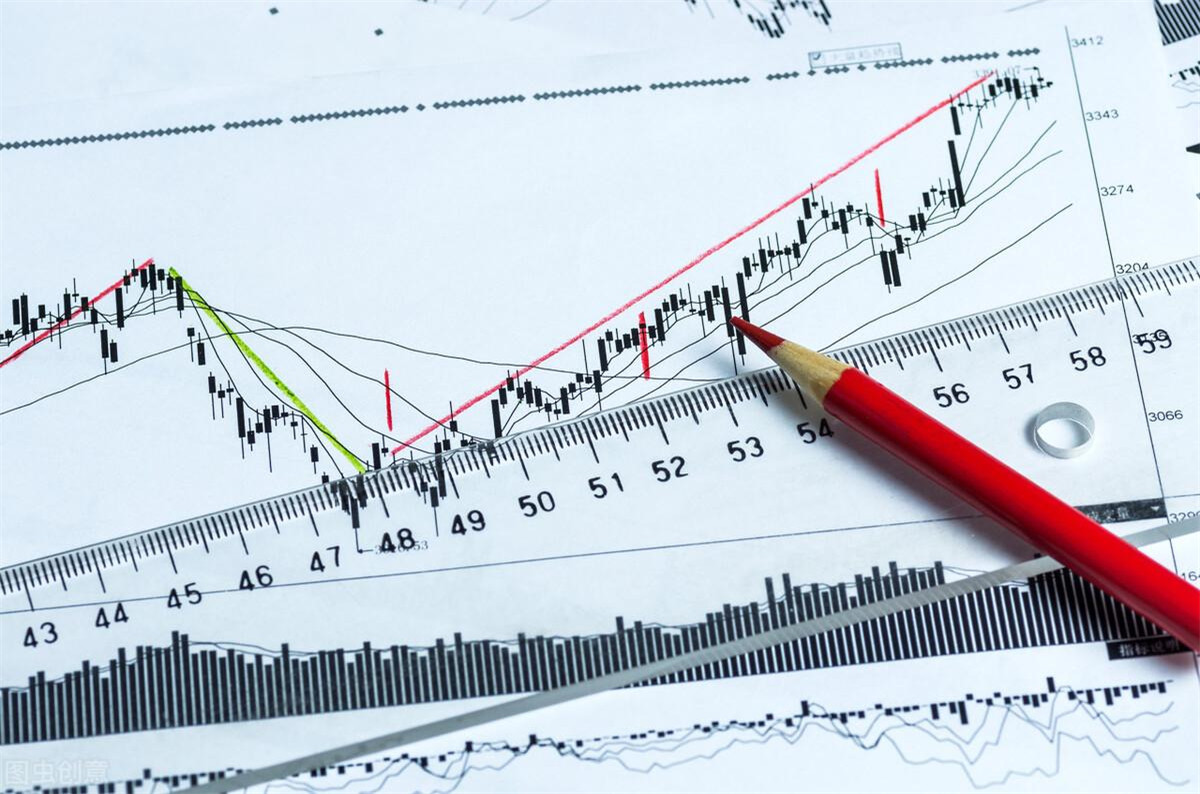In the stock market, commodity market, and various trading platforms, the
slope change of price movement plays an important role in market analysis, but
this concept may sound a bit abstract. This article will delve into what the
slope change of price movement means, and it has an important impact on market
trends and trading decisions to help traders better understand market
trends.

The Basic Concept of the Slope Change of Price Movement is:
Price slope refers to the rate of price change per unit time and is an
important indicator of market dynamics. It is usually calculated using
mathematical methods such as linear regression. Through the positive and
negative sum of the slope, we can understand the current trend of the market and
the possible future change direction. By understanding the principle of slope
change in price movement, we can more accurately judge the current market
environment and avoid making wrong trading decisions. By conducting slope
analysis on the price data of a certain market in the past, we can clearly see
the guiding role of slope changes in the market. For example, a stock that
continues to rise when it has a positive slope but drops rapidly when it has a
negative slope provides investors with a clear trading signal.
Reasons for Changing in the Slope of the Price Movement:
-
Changes in supply and demand:
Increased demand: When market participants increase demand for an asset, the
price may rise, and the upward trend may manifest itself as a positive slope.
This could be due to good fundamentals, positive market sentiment, or other
positive factors.
Increase in supply: On the contrary, if the supply increases, the price may
decrease, creating a negative slope. Increased supply may result from new
issuance, increased production, or other negative factors.
-
Market sentiment and investor behavior:
Optimism: Optimistic market sentiment may lead investors to buy, driving
prices up. In this case, a positive slope may reflect market participants'
positive expectations about the future.
Pessimism: Conversely, pessimism can cause investors to sell, driving prices
down. The negative slope may reflect market participants' pessimistic
expectations for the future.
-
Market liquidity and Volume:
High Liquidity: When market liquidity is high, trading volume may increase
and price volatility may increase, possibly resulting in changes in slope. Large
volumes of trades can trigger rapid price movements.
Low liquidity: Low liquidity may result in reduced trading volume and weaker
market volatility, resulting in a flatter slope.
-
Macroeconomic factors:
Economic Growth: Strong economic growth may drive corporate earnings and
market performance, leading to a positive slope. Conversely, a recession may
result in a negative slope.
Interest rate policy: Changes in the central bank's monetary policy may have
an impact on market interest rates and asset prices, which in turn affect the
slope of prices.
-
Technical factors:
Technical Indicators: The actions of traders using various technical
indicators can affect the direction of prices. For example, Moving Average crossovers, relative strength indicators, etc. may trigger investors' buying and
selling decisions.
Support and Resistance: The presence of support and resistance levels can
cause a change in price direction at a specific price level, thus affecting the
slope.
-
Global events and geopolitical factors:
Global events: Global events, such as trade wars, natural disasters, global
economic crises, etc., may have an impact on the market and cause violent price
fluctuations.
Geopolitical Risk: Geopolitical tensions could cause investors to flee risky
assets, affecting the slope of prices.
-
Breaking events and news:
Important news: Key news releases, such as corporate acquisitions, government
policy changes, etc., may have a significant impact on market expectations and
trigger rapid price changes.
-
Market participant types:
Institutional Investors: Trading activity by large-scale institutional
investors can have a significant impact on the market, driving changes in price
trends and slopes.
Retail Investors: The actions of retail investors can also trigger rapid
price movements in the short term.
How to Calculate the Slope Change of Price Movement:
Calculating the slope change of a price run involves the use of mathematical
tools and methods of technical analysis. A common method is to use a moving
average and its slope.
Here's a simple way to calculate the slope change of a price run:
Select the time period: First, determine the time period for which you want
to calculate the slope. This can be minutes, hours, days, or any other unit of
time, depending on how closely you follow the market and the purpose of your
analysis.
Get price data: Collect price data for the selected time period. This can be
the opening price, closing price, high price, low price, or a combination
thereof, depending on your analytical needs.
Calculate Price Change: Using selected price data, calculate the price change
between each time point. This can be found by subtracting the price at the
previous point in time from the current price.
Price change = current price − price at the previous point in time
Calculate the slope: Divide the price change by the corresponding time
interval to get the slope. If you are using a closing price (such as the closing
price), then the calculated slope will tell you the average rate of change in
price over the selected time period.
Slope = price change/time interval
This is a basic approach, and the exact calculation may vary based on
specific needs and market conditions. If you want more complex slope
calculations, you can use mathematical tools, such as linear regression analysis
or other techniques, to fit a best-fit line to more accurately describe the
slope changes of the price trend. Using technical analysis software, you will
usually find tools to directly calculate slope, eliminating the need for manual
calculations.
The Positive and Negative Impact of Price Movement Slope Changes on the Market:
-
Positive slope:
Uptrend: A positive slope indicates an upward trend in prices. This could be
a sign of strong bull power in the market, with investors generally bullish on
the asset. During an uptrend, investors may prefer to hold positions in the
expectation that prices will continue to rise.
Positive Signal: A positive slope may be viewed as a positive technical
signal, indicating that the market is in strong bullish territory. This could
attract more investors to participate, pushing prices higher.
-
Negative slope:
Downtrend: A negative slope indicates a downward trend in price. This may
suggest that short forces have the upper hand in the market, and investors may
be more cautious and may consider reducing positions or looking for
short-selling opportunities.
Pessimistic Signal: A negative slope may be viewed as a pessimistic technical
signal, indicating that the market may be entering a bear market condition. This
could trigger concerns among investors, leading to increased selling
pressure.
-
Trend reversal with slope change:
From positive to negative: When a positive slope changes to a negative slope,
it may signal a slowdown in the uptrend or a possible reversal. This could be a
signal for investors to reduce their long positions or switch to short
positions.
From Negative to Positive: When a negative slope changes to a positive slope,
it may signal a slowdown in a downtrend or a possible reversal. This could
trigger investor optimism about the market, potentially increasing long
positions.
-
The slope is zero:
Sideways or Consolidated: When the slope approaches zero, it indicates that
the market may be in a sideways or consolidation phase. At this time, investors
may wait and see, waiting for the market direction to become clearer.
The Relationship Between the Slope of Price Movement and Market Fluctuations:
-
Large slope changes:
Increased market volatility: When the slope of the price changes
significantly, it indicates a sharp change in the price trend, and market
volatility may increase. This may be caused by new information, events, or
market sentiment, causing investors to adjust their expectations and
strategies.
-
Small slope changes:
Market volatility is relatively flat. Small changes in slope may indicate
relatively stable price trends and relatively flat market volatility. This may
occur during a sideways or consolidation phase, where investors may wait on the
sidelines for clearer market direction.
-
The rate of change of the slope:
Rapid changes can be accompanied by wild swings. Rapid changes in slope can
be accompanied by wild swings in the market. This may reflect sharp changes in
market participant sentiment, bringing rapid price swings.
Slow changes may be accompanied by relatively smooth fluctuations. Slow
changes in slope may be accompanied by relatively smooth market fluctuations,
indicating that the market may be in a relatively calm state.
Slope Changes in Price Movement and Trading Decisions:
By analyzing price slopes, investors can more accurately grasp trading
opportunities. Increase positions when the slope is positive, reduce positions,
or adopt protective strategies when the slope is negative, which helps reduce
investment risks. Changes in slope also provide an important reference for risk
control. When the market is volatile and the slope changes sharply, investors
can adopt a more conservative strategy to avoid heavy losses caused by sudden
changes in the market.
-
Trend confirmation:
Positive Slope: A positive slope usually indicates an uptrend, and traders
may be tempted to adopt a long strategy, i.e., buy. Trend followers may look for
opportunities to enter when prices are rising to make profits on the
continuation of the trend.
Negative Slope: A negative slope suggests a downtrend and may lead traders to
adopt a short strategy, i.e., sell. Trend followers may look for opportunities
to enter when prices are falling in order to follow the trend and make a
profit.
-
Early warning of trend changes:
Slope Change: A sharp change in slope may signal a change in trend. Traders
can judge whether the market is about to reverse by observing changes in slope,
which helps make timely adjustments and decisions.
-
Support and resistance:
Changes in slope near support or resistance: When price moves near support or
resistance levels, changes in slope may be the result of market reaction.
Traders can judge the strength and intentions of market participants by
observing the behavior of the slope around these key levels and thus adjust
their trading decisions.
-
Determination of trading timing:
Slow changes in slope: Slow changes in slope may indicate that the market is
in a channel or range state, at which time traders may look for opportunities
for short-term volatility and adopt a Range trading strategy.
Rapid changes in slope: Rapid changes in slope may trigger rapid price
fluctuations. In this case, traders may look for breakthroughs or rapid market
opportunities and adopt trend-following strategies.
-
risk management:
Smoothness of Slope: When market trends are smooth, traders may choose to
adopt a conservative risk management strategy and control position size in case
price fluctuations are small.
Sharp changes in slope: Rapid changes in slope may be accompanied by greater
risks, so traders may cautiously adjust positions and adopt more conservative
risk management measures.
-
Assessment of trend continuation:
How quickly the slope changes: A sharp change in the slope may indicate how
strong the trend is, while a slow change may indicate that the trend may be
about to lose momentum. Traders can assess a trend's continuation potential by
observing how quickly the slope changes.
The change in the slope of price movement is the password for market
fluctuations. A deep understanding and application of slope analysis are crucial
for investors. Through comprehensive analysis of the positive and negative
slope, size, and factors behind it, investors can better respond to market
changes and improve the success rate of investment decisions. In the
ever-changing market, slope analysis has become a powerful assistant for
investors, helping them better navigate the waves of investment.
Disclaimer: This material is for general information purposes only and is not intended as (and should not be considered to be) financial, investment or other advice on which reliance should be placed. No opinion given in the material constitutes a recommendation by EBC or the author that any particular investment, security, transaction or investment strategy is suitable for any specific person.







